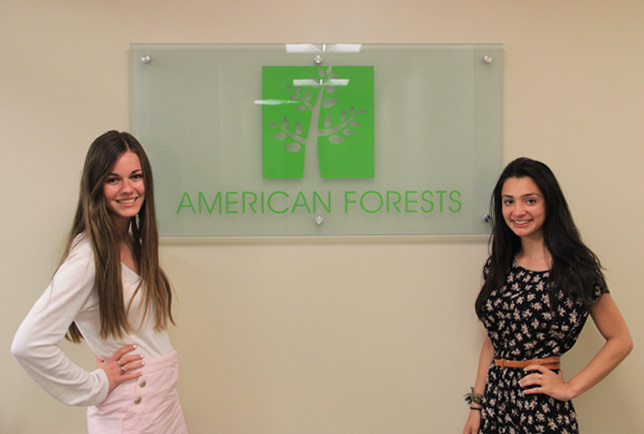By Caroline Brooks, Communications Intern and Sofia Maia-Goldstein, Policy Intern
Last week, our policy intern Sofia discussed the fifth anniversary celebration of America’s Longleaf Restoration Initiative (ALRI). Because American Forests is one of ALRI’s partners, she had the opportunity to attend several events both at the Department of Agriculture offices and on Capitol Hill.
Caroline, our communications intern, joined Sofia for one Hill activity. The two interns accompanied several South Carolina longleaf pine advocates for a meeting in the office of one of their senators, Lindsey Graham.
The meeting was a unique experience for both Sofia and Caroline. Continue reading to learn more about this gathering from the interns’ perspectives.

Main Point 1: Federal and State longleaf reforestation programs in South Carolina have proved highly beneficial.
CB: John Spearman, a private landowner who participated in the meeting, spoke highly of several federal initiatives that have allowed him to successfully grow and maintain longleaf pine. John has run a successful tree farm for many years.
Several years ago, a hurricane uprooted and destroyed vast longleaf population. Fortunately, he had enrolled his farm in a U.S. Forest Service (USFS) program years prior. The support of this federal project, allowed John to reforest his land with longleaf pines that continue to thrive today.
SMG: April Donnelly, director of government relations for The Nature Conservancy in South Carolina, explained the importance of these longleaf restoration programs for low-income South Carolinians. Families unable to manage their own land and resources can seek support through USFS and local programs. By planting longleaf pine, constituents ultimately regain the historical integrity and economic benefit of their land.
American Forests has played a key role in South Carolina’s longleaf restoration through critical reforestation programs that have re-introduced more 5 million trees to the area.
Main Point 2: This meeting also impressed us with the legislative process and its role in longleaf restoration.
CB: What struck me the most about the meeting was the incredible first-hand way we were able to witness the average American citizen actively engaged in democracy. These individuals from various backgrounds were able to come together around a common concern to petition their elected officials.
SMG: J.P. Tyson and Scott Graber, the two legislative aides present, emphasized the Senator’s past support of longleaf restoration through the farm bill and showed an understanding of longleaf’s importance for both his constituents and the state of South Carolina.
This experience showed us the significance of both the legislative process and the relationship between constituents and policymakers. The future of the longleaf depends heavily on federal support, which can continue to be made possible largely by the dedication and advocacy of individuals and organizations. Such initiatives have been successful in the past because constituents — like those with whom we interacted — have given a voice to the issue.